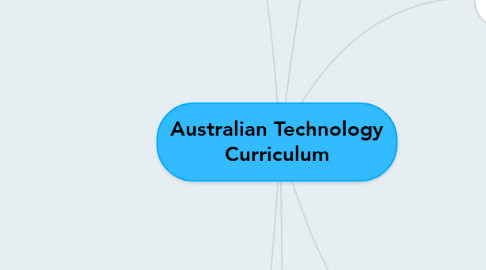
1. Links to Other Learning Areas
1.1. General Capabilities
1.1.1. Literacy, Numeracy, Information and Communication Technology, Critical & CreatingThinking, Personal & Social Capabilities, Ethical Understanding and Intercultural Understanding
1.2. Cross-Curricular Priorities
1.2.1. Sustainability, Asia, Indigenous (longevity of products, preserving cultural artefacts, assisting lower socioeconomic/ developmental cultures and groups)
1.3. Links to Other Learning Areas
1.3.1. Math (perspectives, shapes, measuring and recording data using numbers)
1.3.2. English (Explaining, reviewing, reflecting, describing, recording and representing data and findings in written form)
1.3.3. Science (Investigating, collecting data and recording observations and findings)
1.3.4. HASS (environmental impacts and cultural impacts, comparisons between countries, economic data)
1.3.5. Arts (design, creativity, aesthetics)
1.3.6. Health and Physical Education (food technology, medical technology, observe and record data from physical activities)
2. Structure of the Curriculum
2.1. Two Learning Areas
2.1.1. Design and Technology
2.1.1.1. STRAND 1:The use, development and impact of technology in people's lives and across a range of contexts
2.1.1.1.1. FOUR CONTEXTS: Engineering Principles & Systems, Food & Fibre Productions, Food Specialisations, Materials & Technologies Specialisation.
2.1.1.2. STRAND 2: Skills
2.1.1.2.1. Investigating and defining
2.1.1.2.2. Designing and Generating
2.1.1.2.3. Producing and Implementing
2.1.1.2.4. Evaluating
2.1.1.2.5. Collaborating and Managing
2.1.2. Digital Technologies
2.1.2.1. STRAND 1: The digital systems (hardware, software, networks & their uses) and the representation of data
2.1.2.1.1. CONTENT: Types of digital technologies and the various ways to represent the data (patterns, symbols, diagrams, numbers and the skills needed to use the technology.
2.1.2.2. STRAND 2:
2.1.2.2.1. Investigating and defining
2.1.2.2.2. Designing and Generating
2.1.2.2.3. Producing and Implementing
2.1.2.2.4. Evaluating
2.1.2.2.5. Collaborating and Managing
2.2. Two Strands
2.2.1. STRAND 1: Knowledge and Understanding
2.2.2. STRAND 2: Processes and Production Skills
3. Six Key Ideas of the Technology Curriculum
3.1. 1. Creating Solutions for Preferred Futures
3.1.1. solultions for the future, possible benefits and risks, short-term & long-term impacts, longevity
3.2. 2. Project Management
3.2.1. Skills, planning, organising and monitoring
3.3. 3. Thinking in Technology
3.3.1. Systems thinking, Design thinking and Computational thinking (Problem solving)
3.4. 4. ICT
3.4.1. Develop systematic protocols for social and ethical understandings
3.5. 5. Safety
3.5.1. Safe use and risks associated with ergonomics, cyber safety, data security and ethical and legal considerations
3.6. 6. Animal Ethics
3.6.1. Caring, using and interacting with animals to comply with ethical protocols
4. Differences between Australian Curriculum and the WA Syllabus
4.1. WA Syllabus provides judging standards for assessment purposes
4.2. WA Syllabus provides assessment strategies
4.3. Australian Curriculum structures the sequence of content into band levels (2 year groups per band), WA Syllabus structures each year group individually.
4.4. WA Syllabus accounts for Student Diversity (ABLEWA)
5. Australian Curriculum Technologies Band Level Sequence
5.1. Foundation - Year 2
5.1.1. Students investigate and design solutions for familiar simple contexts
5.2. Year 3 - Year 4
5.2.1. Students investigate social, technical and sustainable factors that influence design. They collect and interpret data to design a solution.
5.3. Year 5 - Year 6
5.3.1. Students explore the social, ethical, technical and sustainable considerations that influence design. They plan, design, test, modify and create digital solutions.
6. Resources to be used in the Classroom
6.1. LEGO Education
6.1.1. Blog Post
6.2. Dot and Dash
6.2.1. Blog Post
